-

-
We are specialists for your holidays in La Palma. With personalized assistance on-site.

Ulrich & Evelyn Roth -
Our service numbers
Write e-mail+34 822 68 00 89
+49 7442 819 85 90
We're available from Monday to Friday from 10:00 a.m. to 6:00 p.m., and Saturdays from 10:00 a.m. to 1:00 p.m.
-
Accommodations
- with pool 90
- on the seaside 42
- with internet 205
-
Northwest >>
130
- Aguatavar 7
- Arecida 6
- El Castillo 1
- Garafía 4
- Las Tricias 7
- Puntagorda 42
- Tijarafe 22
- Tijarafe Costa 6
- Tijarafe El Jesús 12
- Tijarafe La Punta 21
- Tinizara 2
-
Aridane Valley >>
225
- Celta 7
- Charco Verde 3
- El Paso 23
- Hermosilla 1
- La Bombilla 2
- La Laguna 11
- Las Manchas 24
- Las Norias 11
- Los Llanos de Aridane 25
- Puerto de Naos 45
- San Nicolas 8
- Tacande 2
- Tajuya 9
- Tazacorte Costa 5
- Tazacorte Puerto 14
- Tazacorte Villa 23
- Todoque 12
-
South >>
31
- Fuencaliente 7
- Las Indias 4
- Lomo Oscuro 1
- Los Quemados 6
- Salemera 2
- Tigalate 2
- Villa de Mazo 9
- East >> 16
-
Northeast >>
5
- Barlovento 2
- Los Sauces 2
- Puntallana 1
The Fauna on the „Isla Bonita“
The Fauna on the Canary Island La Palma
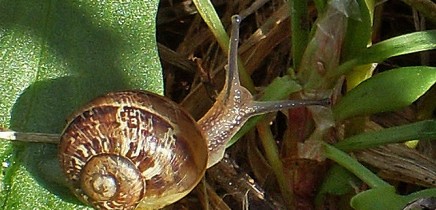
Due to different ages and geographic positions each island of the Canary archipelago not only shows a different flora but also a diverse fauna.
La Palma is the north-western island group, situated far out in the Atlantic Ocean.
Even you might not suspect at first glance, the fauna is extremely rich in species.

Most of the animals, however, are invertebrates, of which the majority is hardly or still not explored at all.

Moreover, there are birds and reptiles, the only native mammals are bats.
Partially, endemic subspecies have developed, of which most are native only on the Canary Islands and some on a certain island, even in completely restricted areas.
In the depth of the Ocean you find abundant swarms of fish and other sea animals.
Terrestrial Mammals
The only mammals that exist on La Palma, without humans being involved, are bats.

 Typical domestic and farm animals like pigs, goats, cows, sheep, chickens, dogs and cats were kept for a purpose.
Typical domestic and farm animals like pigs, goats, cows, sheep, chickens, dogs and cats were kept for a purpose.
Among them endemic races have formed like the Palmerian goats, sheep, cows, chicken and pigs. They were named "raza palmera".
Dogs also managed to develop their own breed.

The "pastor garafíano", a long-haired shepherd dog actually comes from the area of Garafía. Moreover, there is the "ratonero“, a small hunting dog, who still fights for its recognition as a true Palmerian race.
Talking about hunting we meet native wild rabbits, ferrets and the Berber sheep (Arruí). Furthermore, there are also rats and mice.
Mammals in the Water and other Sea Animals
Despite the worldwide problem of overfishing, which has also become an issue on the island, La Palma's coast shows a rich diversity of species.
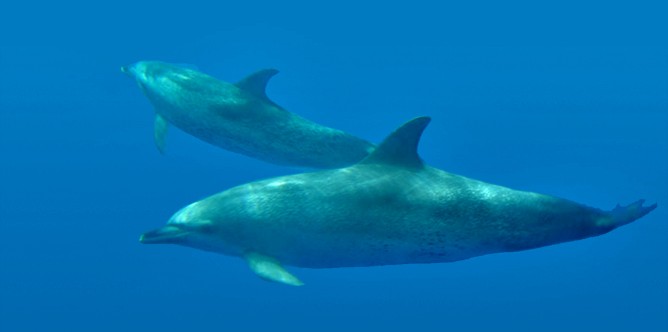
Sea mammals like different whale species, among which are dolphins, can be watched on boat trips.
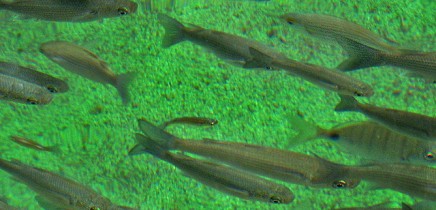 Depending on the time of the year, different species of tuna fish swim around.
Depending on the time of the year, different species of tuna fish swim around.
Ses sails, sea horses, starfish, crabs as well as the Parottfish and the gilthead seabream, moray eel, sea bass and other fish can mostly be observed during dives.
Occasionally, rays, sharks (peaceful ones), black corals, octopus, barracudas and jellyfish can be observed.
Birds
Due to the isolated location of the Canary islands, partially endemic species were formed.
On La Palma you find the La Palma Chaffinch and the La Palma-Blue Tit. There are also birds, that have survived on La Palma, even they did not on other islands, like the Cornish Cough, Red-billed Cough, the Canary Raven, that are endangered species.
Moreover there are Canary endemic birds like the Canary Kinglet, the Canary Chiffchaff and the chirpy Senius Canary, which are the forefathers of the famous breed of the joyful singing canaries.
The "Harz Roller" became famous in the 18th century, when mineworkers brought this bird down the mines, where it became a life saver. Those birds were more sensible underground than their two-legged mineworkers. Whenever the canaries became languorous and fell down the perch, mineworkers knew that they were at risk of breathing the mortal, odourless carbon monoxide and left the shafts.
Some singing birds like for example the warbler, robin, blackbird, Western Greenfinch and Grey Wagtail can be found in gardens and forests.
Quails, plovers or woodcock became rare. The Laurel Pigeon "paloma rabiche" is less shy than the Bolle's Laurel Pigeon, which can only be found in the laurel forests.
In winter migratory birds visit the island. Some only rest in the Salinas of Fuencaliente, others stay until spring.
The largest bird of prey on La Palma is the common buzzard.
Common Kestrels can often be spotted, sparrow hawks are rare. From time to time eagles and other hawk species can be observed, however, they are not native.
At the coast you can watch gulls by day and also Black Turnstones.
Around the end of February until mid of November, at night, you can hear the strange calls of the Cory's Shearwater Bird. They visit the island for breeding. By day they search for food out on the sea and they return at nightfall.
Reptiles and Amphibians
On La Palma there are two reptile species.
By day, lizards who prefer warm climate are around and are named "Bluebeard" after the striking throat pouch of the male birds.
At night the Canary Gecko loves to sit on house walls next to lamps to couch, waiting for insects.
Other amphibians of the island are the two frog species Iberian Marsh Frog and Mediterranean Tree Frog.
Invertebrates
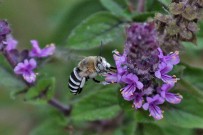
The large group comprises many animals, that are hardly or not explored at all.
Most frequent on La Palma are bees, butterflies, dragonflies, snails, wasps, spiders, millipedes (harmless, love to climb white house walls in winter) and grasshoppers.
There is a poisonous centipede, which is shy by nature
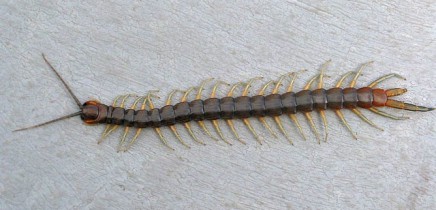 You mostly find that arthropod in the area of Mazo und Fuencaliente, hidden under stones.
You mostly find that arthropod in the area of Mazo und Fuencaliente, hidden under stones.
I have never heard any hiker complaining about being bitten or seeing a centipede around there.
Construction and street workers are often those, who run across one of those animals and kill them. Prevention is better than cure. A bite of a centipedi can be compared to a bee bite.


